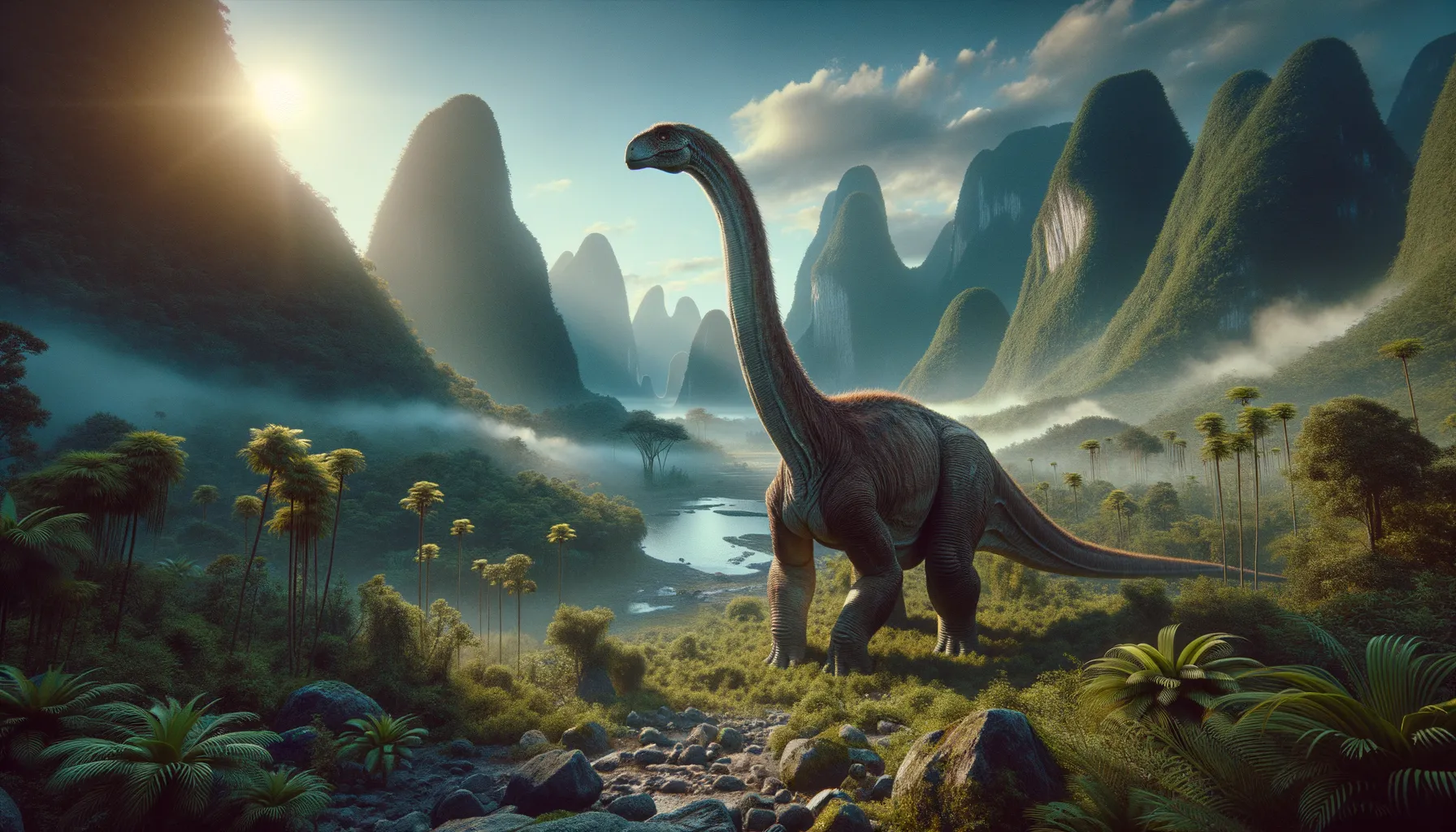
Euhelopus
The gentle giant of the Jurassic era!
Period
Jurassic
Length
Grew up to 50 feet in length.
Height
Reached approximately 16 feet at the shoulders.
Weight
Weighed up to 15 to 20 tons.
Euhelopus was a long-necked herbivorous dinosaur that roamed the Earth during the Jurassic period. Known for its impressive size and long neck, it had a small head compared to its body. This dinosaur was primarily found in what is now China. Many of its physical characteristics made it well-suited to a plant-based diet, allowing it to reach vegetation high above the ground.
Diet
Euhelopus was an herbivore, feeding primarily on plants. Its long neck helped it reach leaves and branches high in the trees.
Hunting
As a herbivore, it did not hunt but foraged for plants. Its long neck allowed it to access a broad range of vegetation, minimizing competition for food.
Environmental challenges
During its time, Euhelopus faced environmental challenges such as changes in climate and vegetation. The fluctuation of food sources sometimes forced it to travel long distances in search of sustenance. Natural disasters like floods or volcanic activity could have also posed threats to their survival.
Speed
Slow-moving due to its massive size.
Lifespan
Estimated to be around 70-100 years.
First discovery
Discovered in China in the early 20th century.
Fun Facts
- Euhelopus was a sauropod dinosaur that lived around 130 million years ago in what is now China.
- This dinosaur's name means 'good marsh foot,' reflecting the muddy environments it likely inhabited.
- Unlike many other sauropods, Euhelopus had front legs that were longer than its back legs, giving it a unique posture.
- Euhelopus had an unusually long neck, which could have been used to reach vegetation high up in trees.
- Fossils of Euhelopus were first discovered in the 1920s, and it was one of the first Chinese dinosaurs to be studied scientifically.
- Despite its massive size, Euhelopus was a plant-eater, using its peg-like teeth to strip leaves from branches.
- This dinosaur is believed to have moved in herds, providing safety in numbers from predators.
Growth and Development
From hatchling to adult, Euhelopus experienced significant growth, which required a stable food supply. Juveniles may have grown rapidly to reach a size where they were less vulnerable to predators. The development of its long neck and supportive structure was crucial for accessing food high above ground.
Habitat
Euhelopus likely inhabited forested areas with abundant vegetation. These environments provided cover from potential predators and a rich supply of food sources. Its adaptation to browsing high in trees made it perfectly suited to this habitat, allowing it to thrive.
Interaction with other species
As a large herbivore, Euhelopus shared its habitat with other plant-eating dinosaurs. It likely coexisted peacefully with other dinosaurs, given its size and dietary needs. Predatory dinosaurs were potential threats, but its sheer size and herd behavior could help deter attacks.
Natural lifespan
The Euhelopus could naturally live for several decades, assuming access to sufficient food and a safe habitat.
Reproduction
Euhelopus likely laid eggs, as inferred from other sauropods. Nesting would have been done in safe, sheltered areas to protect the eggs from predators. Parental care post-hatching is unknown, but like many sauropods, the young likely had to be somewhat self-sufficient soon after birth.
Social behaviour
Euhelopus may have traveled in herds, which provided protection from predators. Their social structure could have helped them find food and navigate environmental challenges. Within the herd, they likely maintained social bonds that facilitated mutual protection.
Fossil locations
The first fossils of Euhelopus were discovered in China's Shandong Province. These key findings have provided much of the information about its physical structure and lifestyle. Additional fossil sites might exist but have been primarily concentrated in East Asia.
